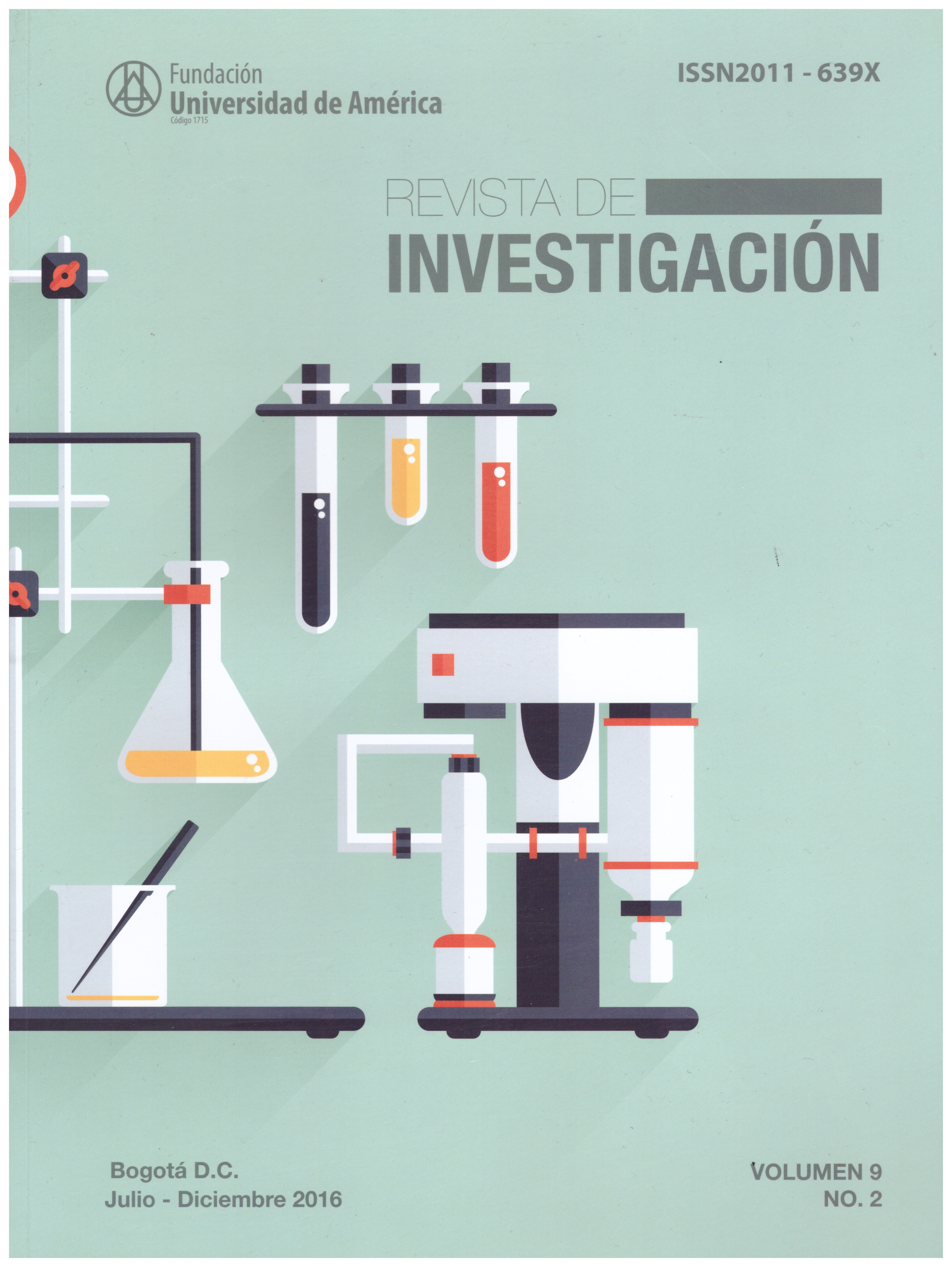Índices de competitividad: Análisis de resultados para Colombia 2015-2016
Resumen
En la actualidad, los países en desarrollo han aumentado su preocupación por la competitividad nacional y su posición en los índices de desempeño competitivo internacional. Este trabajo presenta un primer análisis de los resultados que Colombia ha obtenido en las mediciones de competitividad en el 2015-2016, desde una perspectiva de desarrollo territorial. Se consideran las mediciones de los índices más conocidos: The Global Competitiveness Report, Doing Business, y The IMD World Competitiveness Yearbook Los resultados exponen un panorama estable a nivel macroeconómico y financiero, y de incertidumbre en ámbitos institucionales y territoriales.
Citas
Banco Mundial. (2014). Doing Business en Colombia. Retrieved October 17, 2014, from http://espanol.doingbusiness.org/data/exploreeconomies/colombia#enforcing-contracts
Benzaquen, J., del Carpio, L. A., Zegarra, L. A., & Valdivia, C. A. (2010). Un índice regional de com- petitividad para un país. Revista Cepal, (102), 69-86. Retrieved from http://www.cepal.org/publicaciones/xml/4/41914/rve102benzaquenetal.pdf
Buckley, P. J., Pass, C. L., & Prescott, K. (1988). Measures of international competitiveness: A critical survey* f. Journal of Marketing Management, 4(2), 175-200. doi:10.1080/0267257X.1988.9964068
Camagni, R. (2009). Territorial capital and regional development. In R. Capello & P. Nijkamp (Eds.), Handbook of Regional Growth and Development Theories (p. 118-). Northampton: Edward Elgar Publishing Limited. Retrieved from http://herzog.economia.unam.mx/cedrus/descar- gas/Capello - HB of Regional Growth and Development Theories - 2009.pdf
Camagni, R., Caragliu, A., & Perucca, G. (2011). Territorial capital: relational and human capital. Milano. Retrieved from http://www.grupposervizioambiente.it/aisre/pendrive2011/pendrive/ Paper/Camagni_Caragliu_Perucca.pdf
Giaime, B. (2011). Weaving the Rural Web: The dynamics of rural development in Lunigiana. Qua- derni Sismondi, (12).
IMD World Competitiveness Center. (2014). Imd world competitiveness yearbook 2014. Switzerland.
Krugman, P. (1995). Desarrollo, geografía y teoría económica. Barcelona: Antoni Bosh.
Lall, S. (2001). Competitiveness indices and developing countries: an economic evaluation of the global competitiveness report. World development,29(9), 1501-1525.
Lang, J. C. (2009). Cluster Competitiveness : The Six Negative Forces. Journal of Business and Management, 15(1), 73-94. doi:Business Source Complete, EBSCOhost, viewed 1 July 2014.
Lira, I. S. (2005). Desarrollo económico local y competitividad territorial en América Latina. Revista de La CEPAL, (85), 81-100. Retrieved from http://repositorio.cepal.org/handle/11362/11001
López Niño, D. (2015). El hexágono de la investigación. Questionar, 3(1), 148-162.
Méndez, R. (2002). Innovación y desarrollo territorial: algunos debates teóricos recientes. Revista Eure, 28(84), 63-83. Retrieved from file:///C:/Users/Inv John Ramirez/Downloads/1229-5916-1-SM.pdf
Organisation for Economic Co-operation and Development - OECD. (2001). OECD Territorial Outlook. Paris. Retrieved from http://www.vwl.tuwien.ac.at/hanappi/AgeSo/SecReps/Territorial_ Outlook_F.pdf
Porter, M. E. (1990). The Competitive Advantage of Nations. Harvard Business Review, 68, 73-93. doi:Article
Porter, M. E. (2000). Location, Competition, and Economic Development: Local Clusters in a Global Economy. Economic Development Quarterly, 14, 15-34. doi:10.1177/089124240001400105
Ramirez, J. F. & Alzate, A.M. (2016). Aproximación a una valoración cienciométrica de la competitividad. Revista de Investigación, 9(1), 121-134. http: http://repository.uamerica.edu.co/handle/20.500.11839/537
Ramírez, J. C., Osorio, H., & Isidro, R. (2007). Escalafón de la competitividad de los departamentos en Colombia. (CEPAL, Ed.) (Estudios y.). Santiago de Chile: NACIONES UNIDAS. Retrieved from http://www.cepal.org/publicaciones/xml/3/29973/lcl.2684-p.pdf
Revilla, J., Schiller, D., & Meyer, S. (2013). Capitalising on Institutional Diversity and Complementary Resources in Cross-Border Metropolitan Regions: The Case of Electronics Firms in Hong Kong and the Pearl River Delta. In J. Klaesson, B. Johansson, & C. Karlsson (Eds.), Metropolitan Regions. Knowledge Infrastructures on the Global Economy. Berlin, Heidelberg: Springer Berlin Heidelberg. doi:10.1007/978-3-642-32141-2
Sobrino, J. (2005). Competitividad territorial: ámbitos e indicadores de análisis. Economía, Sociedad y Territorio, (Dossier Especial), 123-183.
Sousa, S. (2011). Entrepreneurship and Institutions in European Union Regional Competitiveness. ProQuest Dissertations and Theses. George Mason University, Ann Arbor. Retrieved from http://search.proquest.com/docview/897101436?accountid=43592
The Economist Intelligence Unit Limited. (2012). Hot spots Benchmarking global city competitiveness. Retrieved from http://www.citigroup.com/citi/citiforcities/pdfs/eiu_hotspots_2012.pdf
Tóth, B. I. (2014). Territorial Capital: Theory, Empirics and Critical Remarks. European Planning Studies, 1-18. doi:10.1080/09654313.2014.928675
van der Ploeg, J. D., van Broekhuizen, R., Brunori, G., Sonnino, R., Knickel, K., Tisenkops, T., & Oostendie, H. (2008). Towards a framework for understanding regional rural development. In J. . Van der Ploeg & T. Marsden (Eds.), Unfolding Webs: The Dynamics of Regional Rural Development (pp. 1-28). Retrieved from http://orca.cf.ac.uk/20526/
Ventura, F., Brunori, G., Milone, P., Berti, G., Ploeg, J. D. Van Der, & Marsden, T. (2008). The rural web: a synthesis. In J. D. Van der Ploeg & T. Marsden (Eds.), Unfolding Webs: the dynamics of regional rural development (pp. 149-174). Retrieved from http://scholar.google.com/scholar?hl=en&btnG=Search&q=intitle:The+Rural+Web+:+A+Synthesis#0
World Bank Group. (2015). Doing Business 2016: Measuring Regulatory Quality and Efficiency. Washington D.C: The World Bank. doi:10.1596/978-1-4648-0667-4
World Economic Forum. (2015). The Global Competitiveness Report. (K. Schwab, Ed.). Geneve: World Economic Forum.












